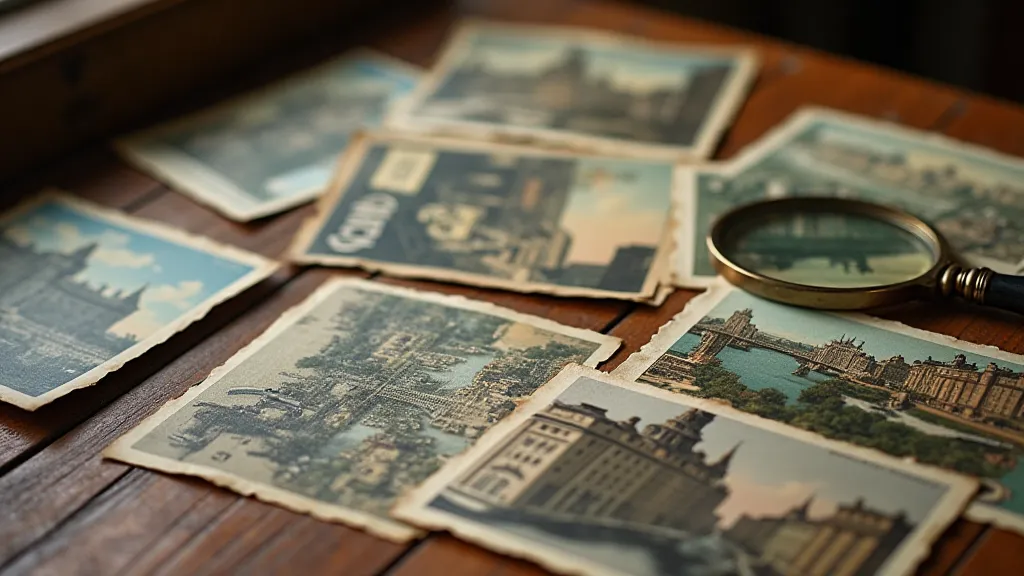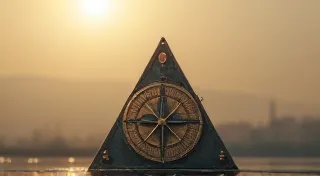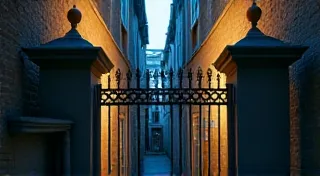Beyond the Viewfinder: The Postcard as a Gateway to Historical Research
There's a particular melancholy that settles in when you hold an antique postcard. It's not simply the fragility of the cardstock, the faded ink, or the slightly yellowed surface. It’s the sense of connection to a time long gone, to someone who held this same image in their hand, perhaps sending it with a brief message to a loved one, or simply cherishing it as a memento. For those of us drawn to antique city postcards, this feeling is amplified. We aren’t merely collecting pretty pictures; we’re holding fragments of history, glimpses into the lives and landscapes of those who came before us.
My own fascination began, as so many do, with a single find. An early 1900s postcard of my hometown, a bustling factory town then, depicting a view largely erased by the relentless march of progress. The buildings were different, the streets busier, the people… different. It wasn't just a picture; it was a portal.
The Postcard’s Rise: A Window to a Changing World
The golden age of postcards, roughly from the 1890s to the 1930s, coincided with a period of incredible societal and technological change. The invention of the "divided back" postcard in 1898 revolutionized communication. Suddenly, a simple image could be coupled with a short message, dramatically reducing the cost and time required for sending greetings. This coincided with rapid urbanization, industrial expansion, and the rise of mass tourism. Cities were becoming symbols of progress and opportunity, and postcards became the perfect medium to capture and share these experiences.
The early postcards weren’t simply photographs; they were artistic creations. Lithography and photogravure techniques allowed for stunningly detailed and often romanticized depictions of cityscapes. Artists weren’t just documenting buildings; they were creating an idealized vision of urban life, often emphasizing grandeur and optimism. Think about the prevalence of horses and carriages alongside burgeoning streetcar lines, illustrating a pivotal point in transportation history.
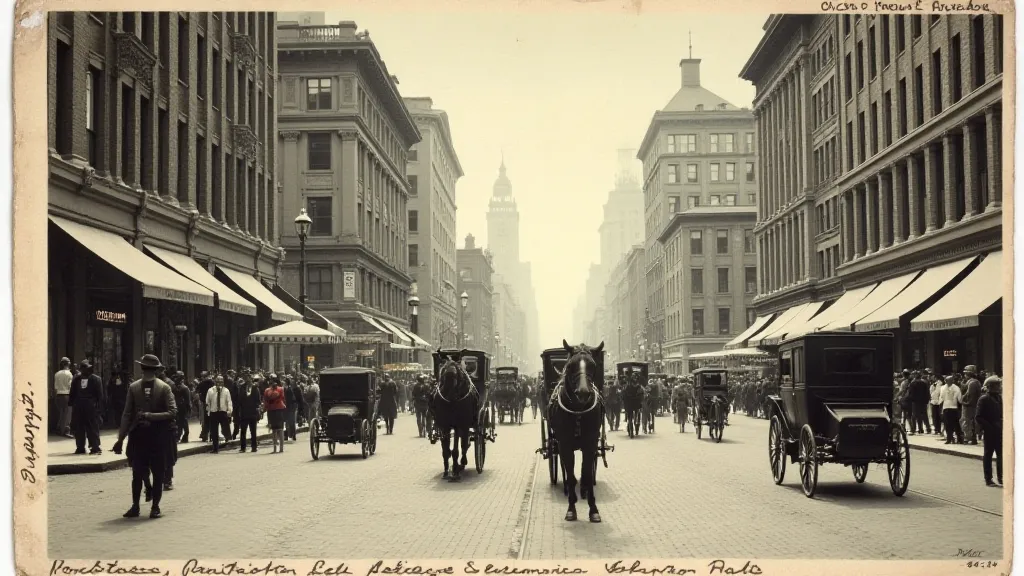
Decoding the Visual Narrative: What Can Postcards Tell Us?
Beyond the aesthetic appeal, antique city postcards serve as invaluable primary sources for historical research. They provide a visual record of urban development, architectural styles, and the evolving social fabric of cities. Studying these images can unlock surprising insights into past events and cultural practices. For example:
- Architectural Changes: Compare postcards showing the same location across different decades to track the evolution of urban architecture and urban planning. Buildings vanish, new structures rise, and entire neighborhoods transform.
- Transportation History: The mode of transportation depicted – horse-drawn carriages, streetcars, early automobiles – reveals crucial details about the technological progress and infrastructure development of a city.
- Social and Economic Conditions: Examine the clothing of the people, the types of businesses lining the streets, and the overall atmosphere of the scene to glean insights into the social and economic conditions of the time. A postcard showing a row of opulent department stores speaks volumes about a city's prosperity, while a depiction of crowded tenements hints at inequality and poverty.
- Mapping Urban Growth: Postcards, especially those from smaller towns, can offer a visual record of urban expansion, showing how cities grew and adapted over time.
The handwritten messages on the backs of these postcards, though often brief, offer intimate glimpses into personal lives and relationships. A simple “Wish you were here!” can speak volumes about the longing for connection and the desire to share experiences.
The Craftsmanship & Series Guides: Appreciation for the Artisans
It’s easy to overlook the incredible skill involved in creating these early postcards. The lithographic process was incredibly complex, requiring meticulous detail and a deep understanding of color and composition. The engravers and printers were true artisans, and their expertise is evident in the quality and beauty of the images. Recognizing this adds another layer of appreciation for these little pieces of history.
Furthermore, many antique city postcards were part of series. These series, often identified by a publisher's logo or a specific numbering system, offer a focused collection of images depicting different aspects of a city or region. Learning to identify these series can significantly enhance your collecting efforts and provide a more comprehensive understanding of a particular place.
For instance, the "Valentine Series," produced by the Valentine Publishing Company, is a renowned series known for its high-quality lithographic images of American cities and landmarks. Identifying a Valentine Series postcard instantly tells you something about its origin and historical significance. Similarly, the "Rotograph" series is prized for its unique photographic reproduction technique.
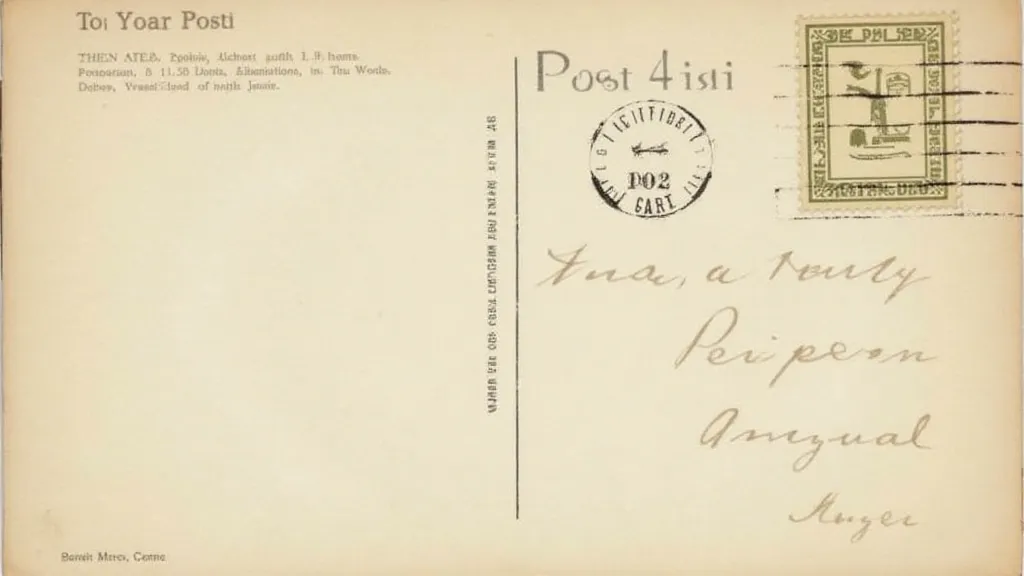
Preserving the Past: Restoration Considerations
Antique postcards, especially those with age and handling, often require careful preservation. While extensive restoration is generally discouraged – originality is paramount – some basic steps can be taken to stabilize fragile cards. Acid-free sleeves and archival storage boxes are essential for long-term preservation. Minor surface cleaning with a soft brush can remove dust and debris.
More significant restoration attempts, such as repairing tears or re-coloring faded images, should only be undertaken by experienced professionals. Improper restoration can damage the card’s value and historical integrity.
A Lifelong Pursuit: Connecting Through Time
Collecting antique city postcards is more than just a hobby; it's a journey through time. It's a chance to connect with the past, to appreciate the artistry of a bygone era, and to gain a deeper understanding of the cities and communities that shaped our world. Every postcard tells a story, and it's up to us to listen.
The next time you hold an antique postcard, take a moment to consider the hands that created it, the person who sent it, and the lives it represents. You're not just holding a picture; you're holding a piece of history, a window into the past, and a connection to those who came before us.
